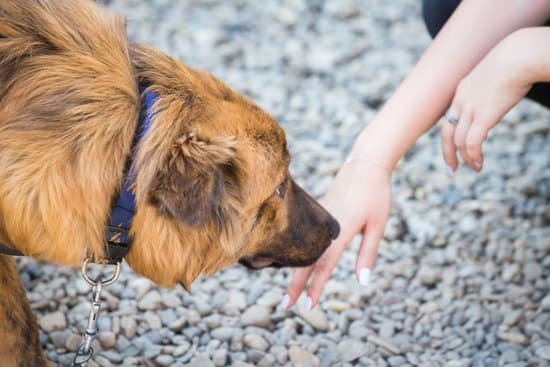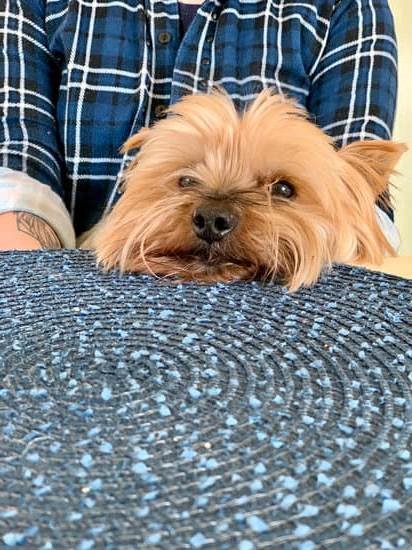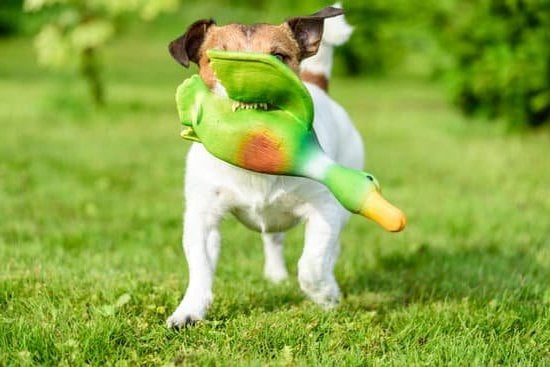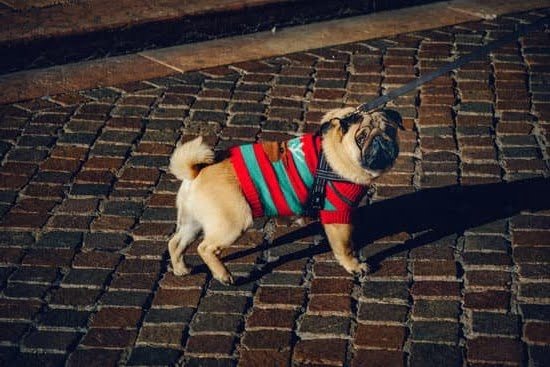Training a dog to pee in the appropriate places is a crucial aspect of responsible pet ownership. Knowing how to train dog pee is essential for both the well-being of your furry companion and the cleanliness of your home environment. Proper pee training not only helps prevent indoor accidents but also strengthens the bond between you and your dog.
By understanding the importance of properly training a dog to pee, pet owners can ensure a harmonious living environment for both themselves and their canine companions. Without effective training, dogs may develop bad habits that are difficult to break, leading to frustration and stress for both the pet and its owner. Establishing good pee training practices from the start sets a solid foundation for a happy and well-adjusted dog.
Whether you choose crate training or paper training as your preferred method, consistency and patience are key elements in successfully teaching your dog where it’s appropriate to relieve themselves. By following a structured routine and using positive reinforcement techniques, you can encourage good behavior in your dog while avoiding common mistakes that may hinder their progress. In this article, we will explore various aspects of dog pee training to help you navigate this important aspect of pet ownership effectively.
Basic Principles of Dog Potty Training
When it comes to training your dog to pee in the right place, it is important to start with the basic principles of dog potty training. Setting a strong foundation in the early stages of training will help ensure successful results in the long run. One of the key principles of dog potty training is consistency. Dogs thrive on routines, so it is essential to establish a consistent schedule for when and where your dog should go to pee.
Another important principle of dog potty training is positive reinforcement. By rewarding your dog with treats, praise, or playtime every time they successfully pee in the designated area, you are reinforcing good behavior and encouraging them to repeat it in the future. Positive reinforcement helps create a positive association with peeing in the right spot and makes the training process more enjoyable for both you and your furry friend.
In addition to consistency and positive reinforcement, patience is also crucial when training your dog to pee properly. Remember that accidents will happen, especially during the early stages of training. Instead of getting frustrated or scolding your dog for mistakes, remain patient and continue to provide guidance and support. With time, dedication, and a lot of love, you can successfully train your dog how to pee in the right place.
Choosing the Right Pee Training Method
When it comes to training your dog to pee in the right place, choosing the right method is crucial. Two common methods for pee training are crate training and paper training. Both have their own benefits and drawbacks, so it’s important to understand each one before deciding which one will work best for you and your furry friend.
Crate Training
Crate training involves using a crate or kennel as a safe and comfortable space for your dog. Dogs naturally avoid soiling their living spaces, so the idea behind crate training is that your dog will learn to hold it until they are let outside to potty.
It’s important to ensure that the crate is not too big, as your dog should only have enough room to stand up, turn around, and lay down comfortably. Using a crate can be an effective way to teach your dog bladder control and help with housebreaking.
Paper Training
Paper training involves teaching your dog to eliminate on a specific area designated with newspapers or pee pads. This method is often used for puppies or small dogs who may not be able to hold their bladder for long periods of time. To start paper training, place newspapers or pee pads in a designated area where you want your dog to go potty.
Gradually decrease the size of the newspaper-covered area over time until your dog learns to use only the pee pad. This method can be convenient for pet owners who are not always home to let their dogs outside frequently.
When deciding between crate training and paper training, consider factors such as your schedule, your dog’s age and size, and any specific needs or limitations you may have. Remember that consistency, patience, and positive reinforcement are key components of successful pee training no matter which method you choose.
By taking the time to understand both options and selecting the one that aligns best with your lifestyle and goals, you’ll be on track towards effectively teaching your dog how to pee in the right place.
Establishing a Routine
One of the most crucial aspects of successfully training your dog to pee in the right spot is establishing a consistent routine. Dogs thrive on predictability, and having a set schedule for bathroom breaks can help reinforce good habits and minimize accidents.
Start by taking your dog outside first thing in the morning, after meals, before bedtime, and at regular intervals throughout the day. By setting a routine, you can help your dog understand when and where it’s appropriate to eliminate.
Consistency is key when it comes to pee training your dog. Make sure to take your pet out to the designated potty area every few hours or after specific triggers like eating or waking up from a nap.
Using verbal cues or commands such as “Go potty” can also help signal to your dog what is expected of them. Over time, your furry friend will start associating these cues with the act of eliminating, making the training process smoother and more effective.
In addition to establishing a routine for bathroom breaks, consistency in praise and rewards is equally important. Whenever your dog successfully pees in the designated spot, be sure to provide lots of praise, pets, and maybe even a treat as a reward.
Positive reinforcement helps reinforce good behavior and encourages your pet to continue following the desired potty training behaviors. Remember that patience is key when it comes to training; consistency and positive reinforcement will go a long way in helping your dog learn how to properly pee where they should.
| Aspect | Importance |
|---|---|
| Establishing Routine | Crucial for consistent results |
| Verbal Cues | Helps communicate expectations |
| Positive Reinforcement | Encourages good behavior |
Positive Reinforcement Techniques
One effective way to utilize positive reinforcement in your dog’s pee training is by using a clicker if they respond well to auditory cues. You can teach your dog that the sound of the clicker means they have done something right, such as peeing in the designated spot.
After they successfully pee in the right place, you can immediately click and reward them with a treat. This helps create a strong association between the action of peeing where they should and receiving a reward, making them more likely to repeat the behavior in the future.
Consistency is key when utilizing positive reinforcement techniques in your dog’s pee training. Make sure to reward your dog every time they pee in the correct spot so they understand what behavior is being reinforced.
It’s also important to give rewards immediately after they finish peeing, so they connect the reward with their action. Remember that every dog is different, so be patient and adjust your approach as needed based on your pet’s individual preferences and responses during training sessions on how to train dog pee.
Common Mistakes to Avoid
One of the most common mistakes that dog owners make when it comes to pee training their furry friends is inconsistency. Consistency is key in any form of training, including potty training a dog.
When you are inconsistent with the rules and routines you have set for your pup, it can confuse them and lead to accidents in the house. Make sure to establish a clear schedule for feeding, potty breaks, and playtime to help your dog understand when and where they should be going to the bathroom.
Another mistake to avoid when training your dog to pee is using punishment as a method of correction. Punishing your dog for having accidents indoors can create fear and anxiety in them, which can actually make the problem worse. Instead of scolding or punishing your furry companion, focus on positive reinforcement techniques. Praise and reward your dog when they go potty outside where they are supposed to, and ignore accidents without making a big fuss about them.
Furthermore, one crucial mistake that many dog owners overlook is not properly cleaning up accidents indoors. If your dog can still smell their urine or feces in a certain spot in your home, they may be more likely to go there again.
To prevent this from happening, make sure to thoroughly clean up any accidents using an enzymatic cleaner designed specifically for pet messes. This will help eliminate odors and stains, reducing the chances of repeat incidents in the same area.
| Common Mistakes | How to Avoid Them |
|---|---|
| Inconsistency | Establish clear schedules and routines for your dog |
| Using punishment | Focus on positive reinforcement techniques instead |
| Improper cleaning of accidents | Thoroughly clean up messes with enzymatic cleaners |
Dealing With Accidents
Accidents are bound to happen during the dog pee training process, but how you handle these mishaps can make a big difference in your dog’s overall progress. Here are some quick cleanup tips and strategies to help you move forward after accidents occur:
- Act Quickly: When you catch your dog in the act of peeing indoors, interrupt them with a sharp noise like clapping your hands and immediately take them outside to finish their business.
- Clean Thoroughly: Use a pet-friendly cleaner specifically designed to eliminate urine odors to clean up accidents effectively. Avoid using ammonia-based cleaners as they can actually encourage your dog to pee in the same spot again.
- Consistent Training: Remain consistent with your training methods even after accidents occur. Continue to reinforce positive behavior and stick to the routine you have established for your dog.
Remember that accidents are a natural part of the learning process for both you and your dog. Stay patient and understanding as you navigate through this phase of training. By staying calm and following these cleanup tips, you can effectively address accidents and continue moving forward with your dog’s pee training journey.
Troubleshooting
Identifying Common Challenges in Dog’s Pee Training
Training your dog to pee in the designated spot can sometimes face challenges along the way. One common issue is inconsistency in behavior, where your dog may have accidents indoors despite being trained. This may be due to various factors such as changes in routine, health issues, or even stress. Another challenge could be stubbornness or resistance from your dog, especially if they are strong-willed or have developed bad habits over time.
Strategies to Overcome Training Roadblocks
To address challenges in your dog’s pee training journey, it’s important to first identify the root cause of the problem. If your dog is having accidents indoors, consider going back to basics and reinforcing basic potty training principles. Make sure there are no underlying health issues causing this behavior and consult with a veterinarian if needed.
Additionally, if your dog is resistant to training or showing stubbornness, patience and consistency are key. Stay persistent with the training routine and use positive reinforcement techniques to encourage good behavior.
Seeking Professional Help for Training Support
In some cases, you may encounter roadblocks in your dog’s pee training journey that require professional guidance. If you’ve tried various strategies and still facing challenges, consider seeking help from a certified dog trainer or behaviorist.
These professionals have the expertise and experience to assess your dog’s behavior patterns, identify underlying issues, and provide tailored solutions to address them effectively. Remember that every dog is unique, and what works for one may not work for another – so don’t hesitate to ask for assistance when needed to ensure successful pee training for your furry friend.
Advanced Training Tips
Training your dog to pee in the appropriate spot is an essential aspect of their overall training. Once your furry friend has mastered the basics of potty training, you can take their training to the next level with some advanced techniques and commands. These advanced training tips will help reinforce good behavior and further strengthen the bond between you and your dog.
Here are some advanced training tips to consider when teaching your dog how to pee:
- Target Training: Teach your dog to target a specific spot or object when it’s time to go potty. This can be a designated area in your yard or a specific command paired with a hand signal.
- Scent Recognition: Use a specific scent or pheromone spray to indicate where your dog should do their business. Reward them every time they use the designated area.
- Verbal Commands: Introduce verbal commands such as “Go potty” or “Do your business” to cue your dog when it’s time for them to relieve themselves.
By incorporating these advanced training tips into your dog’s pee training routine, you can enhance their obedience and reinforce positive behavior. Remember to be patient and consistent with your training efforts, as every dog learns at their own pace. With dedication and persistence, you can successfully train your furry companion to pee like a pro.
Final Thoughts
Properly training a dog to pee is essential for both the pet’s well-being and the owner’s convenience. Understanding the importance of establishing a routine, choosing the right training method, and using positive reinforcement techniques are key aspects in successfully training a dog to pee. By taking the time and effort to train your dog properly, you can enjoy a happier and healthier relationship with your furry companion.
Celebrating progress and success in your dog’s pee training journey is a rewarding experience. As you see your dog consistently following the routine, responding to commands, and avoiding accidents, you can take pride in the hard work invested in their training. It is important to recognize and acknowledge every step forward your dog takes towards mastering their potty training skills.
In conclusion, by following the basic principles of dog potty training, setting up a routine, using positive reinforcement techniques, and staying patient and consistent throughout the process, you can effectively train your dog to pee. Remember that accidents may happen along the way, but with quick cleanup tips and strategies, as well as troubleshooting any challenges that arise, you can navigate through them successfully.
Training your dog to pee is an investment in building a strong bond with your pet based on mutual understanding and respect.
Frequently Asked Questions
How Long Does It Take to Pee Train a Dog?
The time it takes to potty train a dog can vary depending on the individual dog’s age, breed, and temperament. Generally, it can take a few weeks to a few months of consistent training for a dog to learn where it is appropriate to pee.
How Do I Get My Dog to Pee on Command?
Getting your dog to pee on command involves creating a specific cue or phrase that you say every time your dog starts to pee. By consistently using this cue whenever your dog pees outside, they will eventually associate the command with the action of urinating.
How Do I Get My Dog to Pee All at Once?
To help your dog pee all at once, you can encourage them to empty their bladder by taking them outside multiple times a day and providing plenty of opportunities for them to relieve themselves. Consistency in their potty schedule and positive reinforcement when they go pee can also help encourage complete urination each time.

Welcome to the blog! I am a professional dog trainer and have been working with dogs for many years. In this blog, I will be discussing various topics related to dog training, including tips, tricks, and advice. I hope you find this information helpful and informative. Thanks for reading!





